Astronomers Have Some Serious Concerns About Starlink and Other Satellite Constellations – Universe Today
Picture the space around Earth filled with tens of thousands of communications satellites. That scenario is slowly coming into being, and it has astronomers concerned. Now a group of astronomers have written a paper outlining their detailed concerns, and how all of these satellites could have a severe, negative impact on ground-based astronomy.
SpaceX and other companies are casting their keen capitalist eyes on the space around Earth. SpaceX and OneWeb are the only companies—so far—to launch any portions of their satellite constellations. But a number of other companies have plans to do the same, and eventually all of those satellites will number in the tens of thousands.
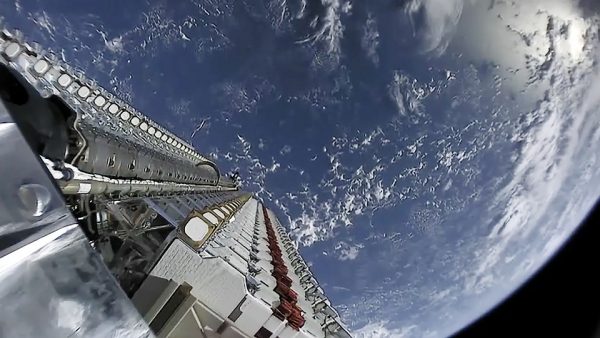
The astronomy community has raised some concerns about these satellite constellations. The Royal Astronomical Society and the American Astronomical Society have both released statements expressing their concern and desire to work with companies in the satellite constellation business. Those statements are polite, cautious in their criticism, and written in the spirit of cooperation.
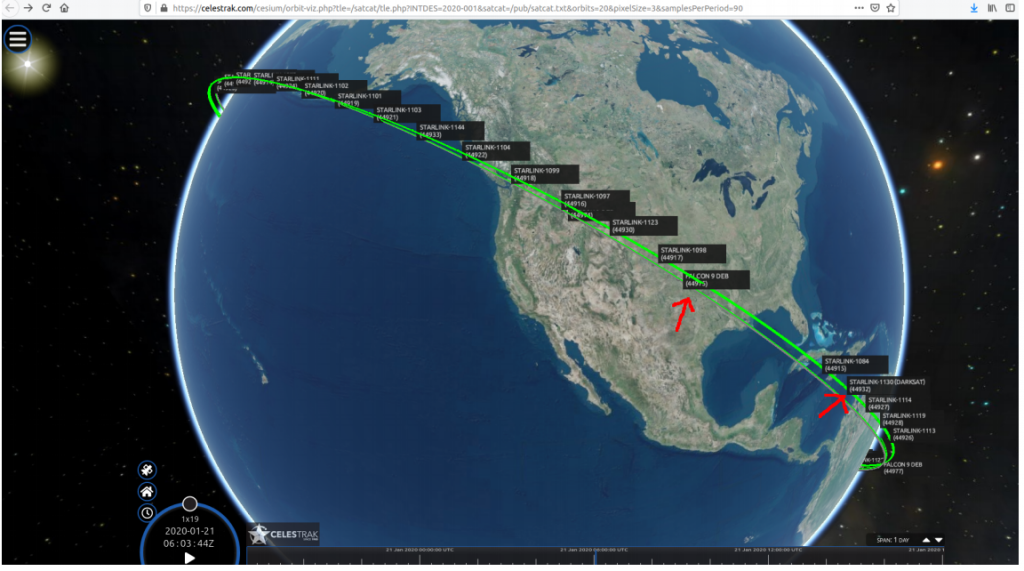
But this new paper lays out all of the astronomical community’s concerns, backed up with data, and presses their point more insistently.
“For centuries ground based astronomical observations have led to exceptional progresses in our scientific understanding of the Laws of Nature.”
From “Concerns about ground based astronomical observations: A step to Safeguard the Astronomical Sky”
A satellite constellation is a group of artificial satellites that work together to provide global or near-global communications coverage. They have the potential to make high-speed internet available almost anywhere. Obviously, there are a lot of benefits to that.
But there are criticisms, too, and three astronomers from Italy’s INAF–Osservatorio Astronomico di Roma, have presented these criticisms in detail. The three are Stefano Gallozzi, Marco Scardia, and Michele Maris. Their paper is titled “Concerns about ground based astronomical observations: A step to Safeguard the Astronomical Sky.”
When you add up all the satellites that companies want to launch as part of their constellations, you get somewhere around 50,000 satellites. The question is, what effect will of those satellites have on ground-based astronomy? The authors of the report claim that all of these satellites will inevitably damage astronomical observing.
A note to readers: English is not the first language of the authors of the paper, so some of the quotes contain small inconsistencies, but the meaning is clear.
“Depending on their altitude and surface reflectivity, their contribution to the sky brightness is not negligible for professional ground based observations,” the report says in the introduction. “With the huge amount of about 50,000 new artificial satellites for telecommunications planned to be launched in Medium and Low Earth Orbit, the mean density of artificial objects will be of >1 satellite for square sky degree; this will inevitably harm professional astronomical images.”
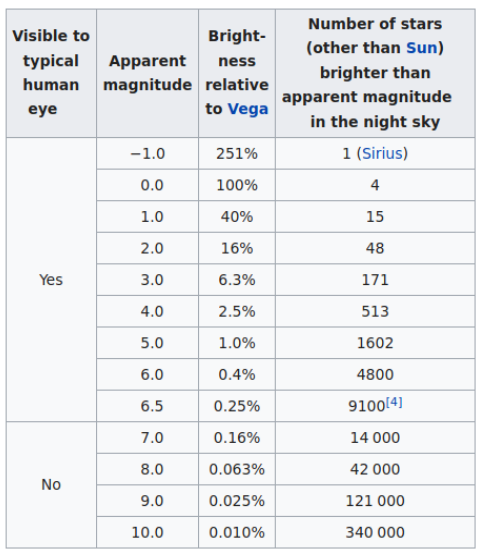
Since SpaceX is the furthest along in deploying their constellation, and their name pops up frequently in the paper. SpaceX’s Starlink system has already launched almost 250 of their satellites, and they plan to deploy up to 42,000 satellites in total. According to the paper, these satellites “will shine from the 3rd to the 7th magnitude in sky after sunset and before sun dawn.”
The authors say that all of those satellites will inevitably leave trails in astronomical images, and may inhibit the search for Near Earth Objects. There’s some degree of risk that we might not spot a potential impact because of all these satellites.
But it’s not just images that will be negatively affected, according to the report. “Serious concerns are common also to other wavelengths eligible for ground based investigation, in particular for radio-astronomy, whose detectors are already saturated by the ubiquitous irradiation of satellites communication from space stations as well as from the ground.”
Back in May 2019, Elon Musk tried to dismiss any astronomical concerns about Starlink. Among his rather brusque dismissal of criticisms was his statement that “We need to move telelscopes <sic> to orbit anyway. Atmospheric attenuation is terrible.”
Musk has a huge profile in the space community, so his words might have convinced some that there are no problems between Starlink and astronomy. But Musk is an entrepreneur, not a scientist.
For all his accomplishments, Musk is not an expert in astronomy or astronomical observing. Is his statement that Starlink “will have ~0% impact on advancements in astronomy,” accurate and informed?
The three authors of the new paper don’t seem to think so. They outline the risks that satellite constellations pose to astronomy, and it’s not all about whether they’re visible in optical light. They point out that there are “dangerous effects arising from such changes in the population of small satellites. A dedicated strategy for urgent intervention to safeguard and protect each astronomical band observable from the ground is outlined.”
“Without ground based observations most of current space based astronomy would be useless or impossible.”
From “CONCERNS ABOUT GROUND BASED ASTRONOMICAL OBSERVATIONS: A STEP TO SAFEGUARD THE ASTRONOMICAL SKY”
The authors start at the beginning, by pointing out the enormous advances in understanding made by ground-based observations. “For centuries ground based astronomical observations have led to exceptional progresses in our scientific understanding of the Laws of Nature.” That’s hard to argue with.
In the paper’s first section, they talk about how space-based astronomy, or space telescopes, have contributed to knowledge. But they point out that ground-based and space-based astronomy need each other and produce the best science when they work together. “Without ground based observations most of current space based astronomy would be useless or impossible.”
It’s safe to say that the authors don’t agree with Musk’s glib assertion that “We need to move telelscopes <sic> to orbit anyway. Atmospheric attenuation is terrible.”
Maybe Musk has never heard of adaptive optics. Adaptive optics allow modern ground-based telescopes to overcome the effect of the atmosphere on observations. Upcoming telescopes like the European Extremely Large Telescope and the Thirty Meter Telescope feature adaptive optics at the heart of their designs.
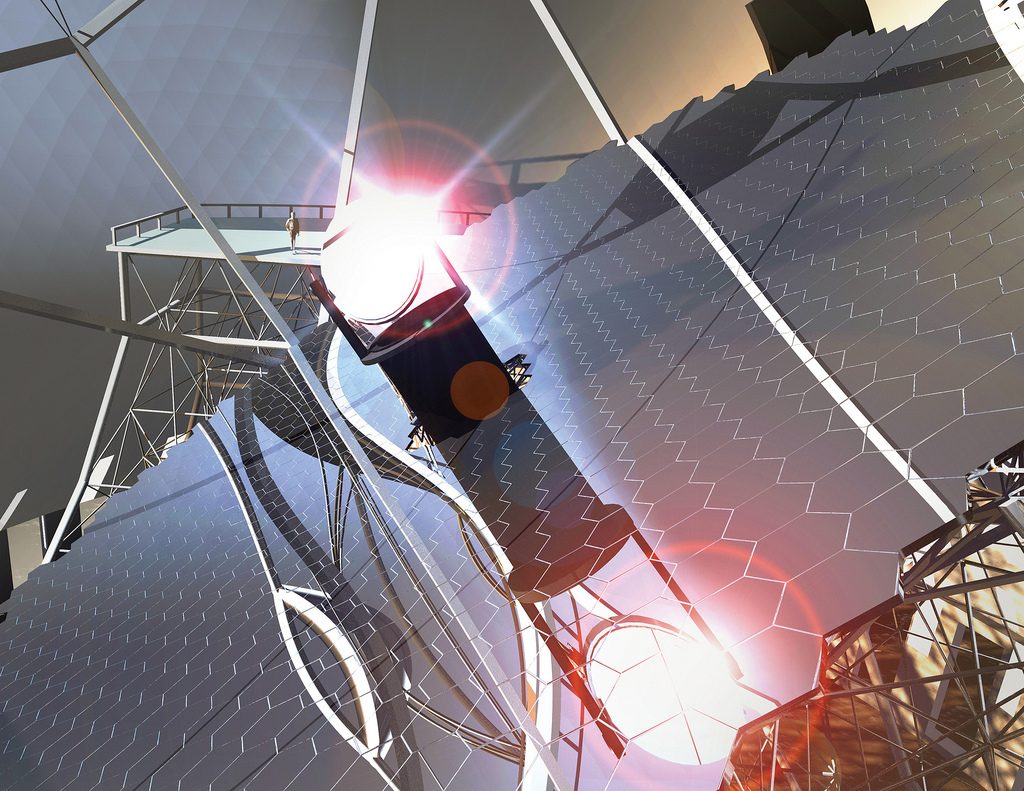
The authors also point out what should be clear to anyone who thinks about it for very long: compared to ground-based astronomy, space-based telescopes are enormously expensive. And risky.
Advances in telescope technology are made here on Earth. Their deployment is the risky part, but the technologies have already been tested and developed here on Earth. As the authors of the paper point out, testing and developing new telescope technologies is not feasible in space.
“A major limitation of space based telescopes is that they can not be maintained, refurbished or repaired after launch.” The Hubble is an exception, and other space telescopes have not been maintained. Once they’re done, they’re done.
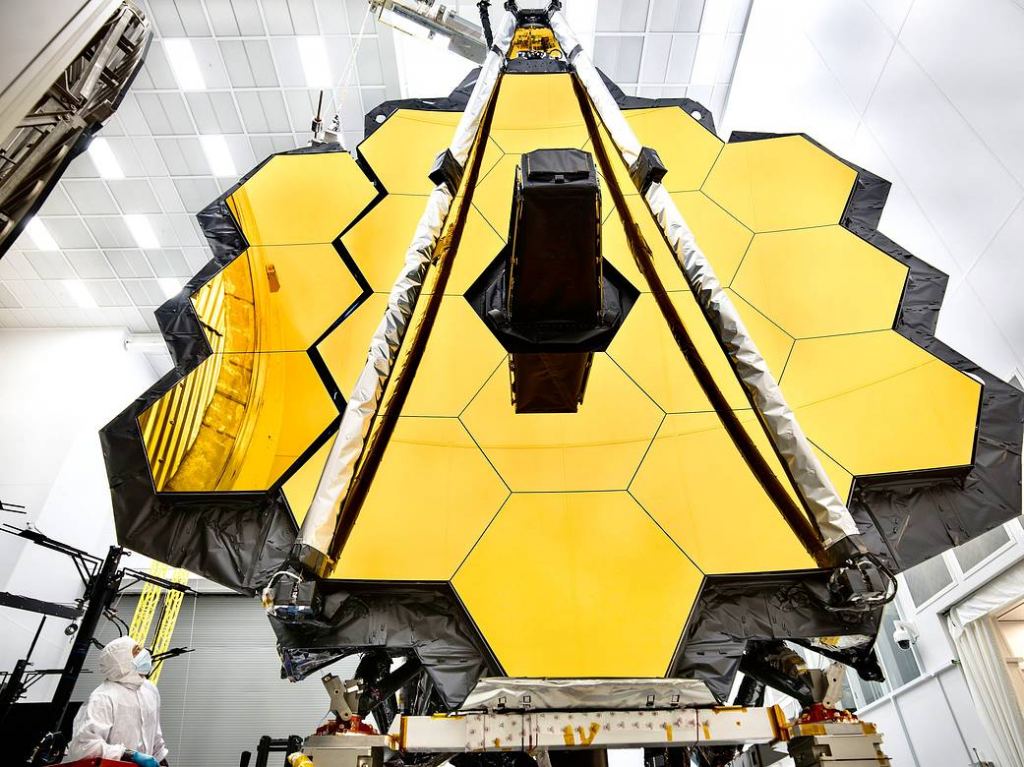
“Compared to ground based observatories, the average life-time of space based telescopes is of the order of a couple of decades or less. On the contrary ground based observatories lasts for several decades, with telescopes installed at the beginning of the space era again working in a profitable manner.” In short, space telescopes become technologically obsolete, while their ground-based counterparts keep on working.
We can see this with the European Southern Observatory’s (ESO) Very Large Telescope (VLT). The VLT is made up of four primary units, and the first one saw first light in 1998. Over the years its been upgraded multiple times, each time increasing its observing capabilities. Two of its instruments, SPHERE (first light June 2014) and ESPRESSO (first light September 2016), are designed to study exoplanets, something that wasn’t important when the VLT was designed. Other instruments, like VISIR (VLT Imager and Spectrometer for mid-Infrared) were upgraded to study exoplanets.
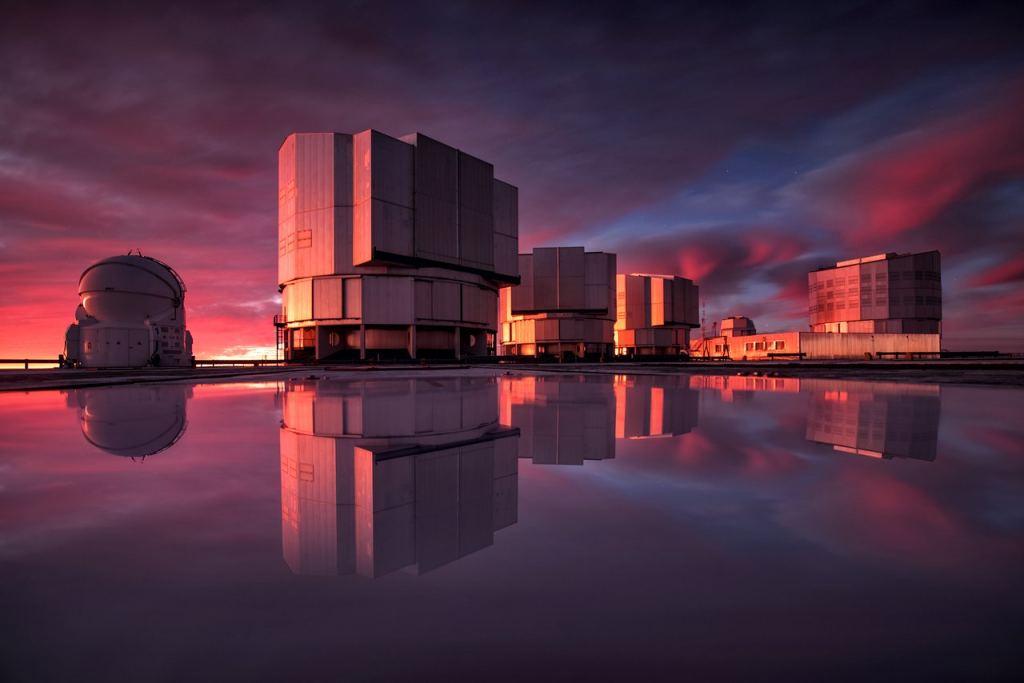
Space telescopes are also costly when compared to ground-based telescopes. The James Webb Space Telescope has been in development for 20 years, and it will cost $10 billion US. But the next generation of ground-based telescopes, like the Giant Magellan Telescope and the European Extremely Large Telescope, will cost about $1 billion each. And they will likely outlive the JWST by decades.
The nitty-gritty part of the paper deals with the actual problems that ground-based astronomy will face from satellite constellations. In some electromagnetic wavelengths, space telescopes are much more effective than ground-based telescopes. In the far Infrared for example, the atmosphere blocks much of it. But that doesn’t tell the whole tale.
In the paper the authors talk about sky degradation. This degradation comes not only from light pollution on the ground, but “it is also due to artificial satellite fleets crossing and scarring observations with bright parallel streaks/trails at all latitudes.”
Starlink alone would like to place up to 40,000 satellites into orbit. That’s just one company out of several with plans to launch satellite constellations. Nobody knows how many there will eventually be, but it’s fair to use a 50,000 satellite figure for discussion.
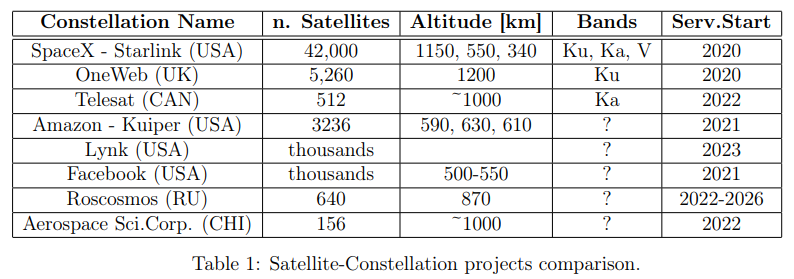
“Astronomers are extremely concerned by the possibility that sky seen from Earth may be blanketed by tens of thousands of satellites, which will greatly outnumber the approximately 9,000 stars that are visible to the unaided human eye,” the authors say. “This is not some distant threat: it is already happening.”
The three astronomers break down all the numbers for Earth’s growing fleet of satellites. Taking into account viewing angles, altitude, and brightness leads them to this conclusion: “Thus with 50k satellites the “normality” will be a sky crowded with artificial objects: every square degree of the sky will have a satellite crawling in it along the whole observing night accessible and visible by astronomical cameras and not only by professional instrumentation.”
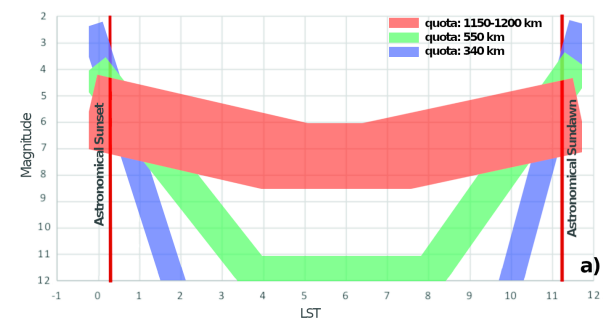
According to the authors, all of this light pollution will be a serious detriment to astronomical observing. They acknowledge that SpaceX is experimenting with one “dark” satellite which is painted black to reduce reflectivity. But they point out that 75% of the satellite’s surface is solar panels, which obviously cannot be painted. They also point out problems with painting a satellite black: “If the satellite body will be inhibited to reflect the sun light, it will absorb radiation warming too much with possible failures, thus will probably increase the risk management for the whole fleet and make the dark-coating solution ineffective or even counterproductive.”
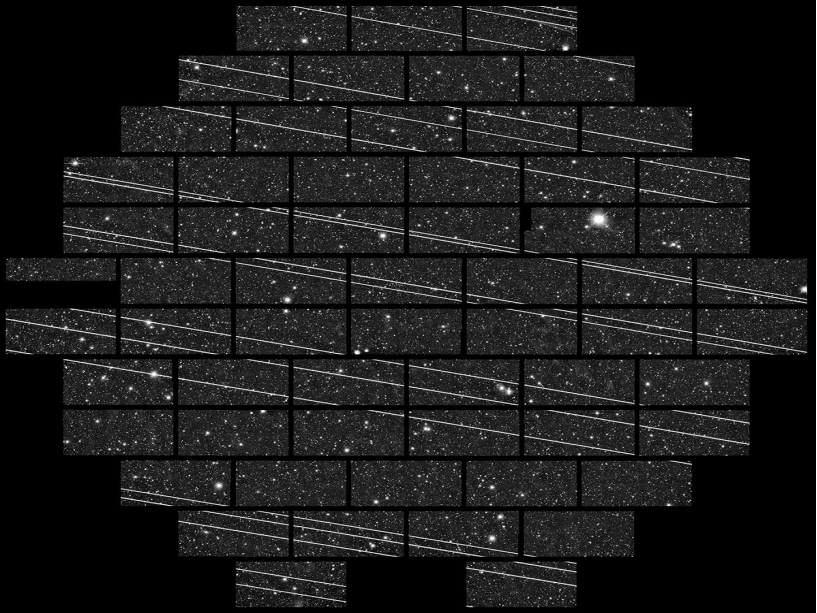
Then there’s the whole problem of radio-band interference. “Even with best coating and mitigation procedures to decrease the impact on visual astronomical observations, what it is often omitted or forgotten is that telecommunication constellations will shine in the radio wavelengths bands, observable from the ground.”
There are decades old agreements from the beginning of the space age that reserve certain radio frequencies for certain uses. The frequencies of certain atoms and molecules in space are reserved for radio astronomy. These include carbon monoxide and its isotopes, and H2O.
Radio astronomers already have to contend with all kinds of interference. According to the authors, this will get much worse. “What is not widely acknowledged is that the development of the latest generation telecommunication networks (both from space and from Earth) already has a profound impact on radio-astronomical observations (at all sub-bands): with LEO satellite fleets it is quite sure that the situation could become unbearable.”
“Persons belonging to future generations have the right to an uncontaminated and undamaged Earth, including pure skies;”
UNESCO’s Universal Declaration of Human Rights for Future Generations.
Then there’s the question of legality, and which bodies can authorize the deployment of satellite constellations.
The authors draw our attention to the 1994 statement from UNESCO (United Nations Educational, Scientific and Cultural Organization). That statement says “Persons belonging to future generations have the right to an uncontaminated and undamaged Earth, including pure skies; they are entitled to its enjoyment as the ground of human history of culture and social bonds that make each generation and individual a member of one human family.”
That same statement from UNESCO also says “Here, World Heritage is the property of all humankind, and while there may be protective laws, enforcing this is another matter, as only States can sue other States under this type of international treaty. A State is responsible for the activities that occur within its jurisdiction – whether they are authorized or unauthorized.”
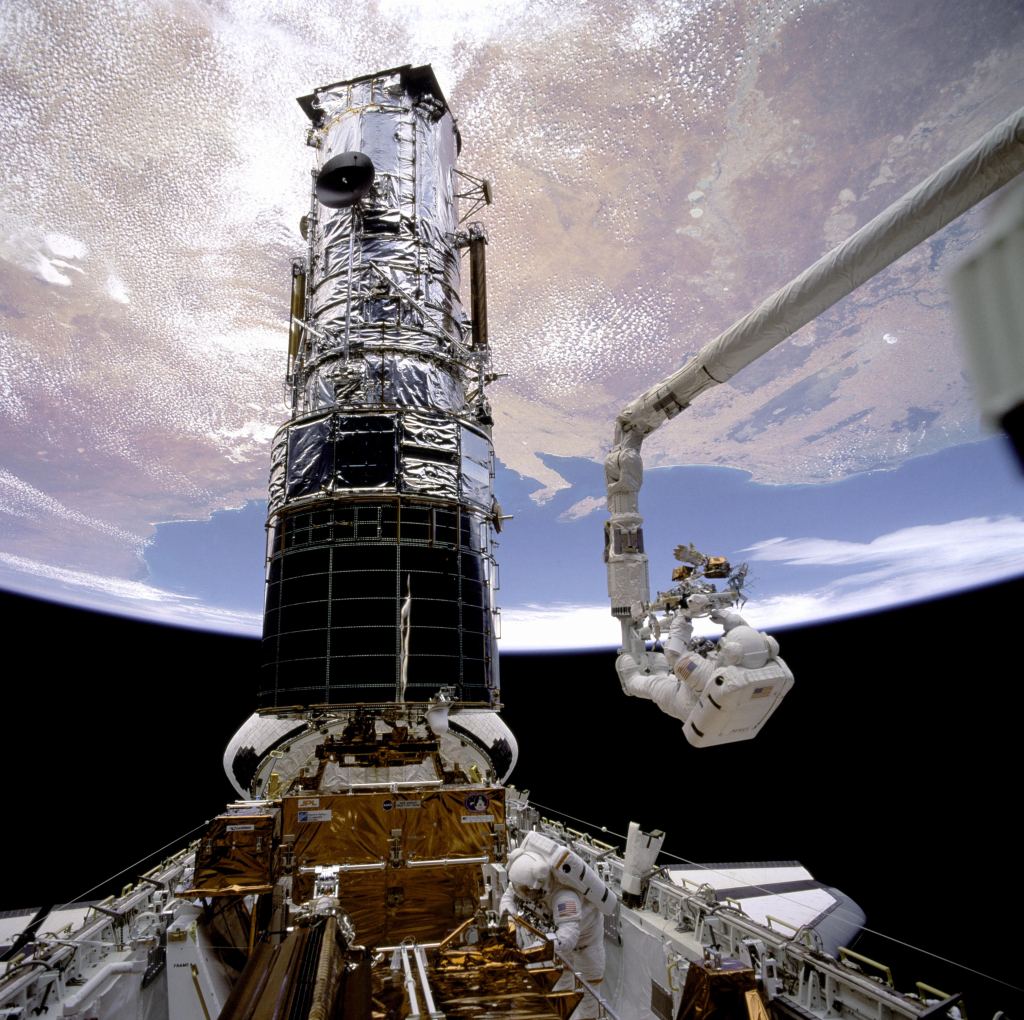
The three astronomers point out that since the FCC and other bodies in the United States have given approval to Starlink, they may be able to halt Starlink, too. They may even be obligated to under international law.
They also mention the Outer Space Treaty, and say “And the legal process is that the state government, this time the USA government, is legally responsible for all objects sent into outer space that launch from USA borders. That means, that it is the USA government that is responsible for the harm caused by its corporation, Starlink, sending objects into orbit that cause harm.”
The paper draws to a close by pointing out possible legal actions that the international community could take to stop satellite constellations.
They could sue the FCC because in their approval they didn’t take light pollution into account, which violates the National Environmental Policy Act. That act requires any federal agency to consider the environmental impact of the projects they approve. The authors claim that the FCC didn’t adequately consider the light pollution from Starlink.
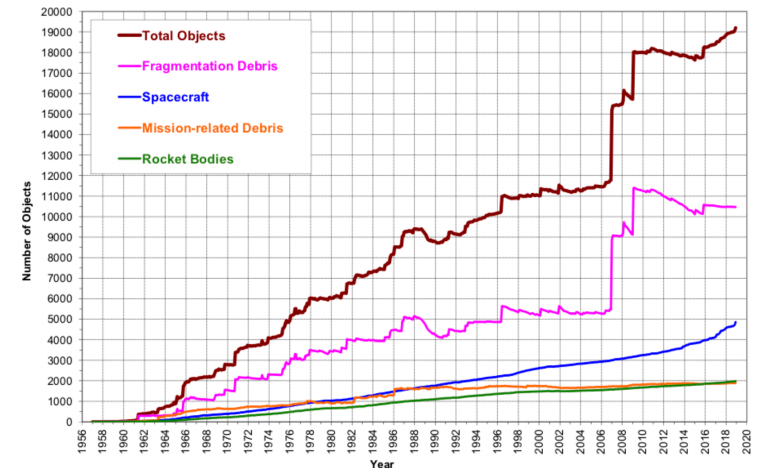
The international astronomy community could “sue in court for lack of jurisdiction and jurisprudence of US FCC to authorize private not geostationary satellites over other states and nations.” This calls into question the FCC’s right to even authorize satellite constellations that travel over other nations.
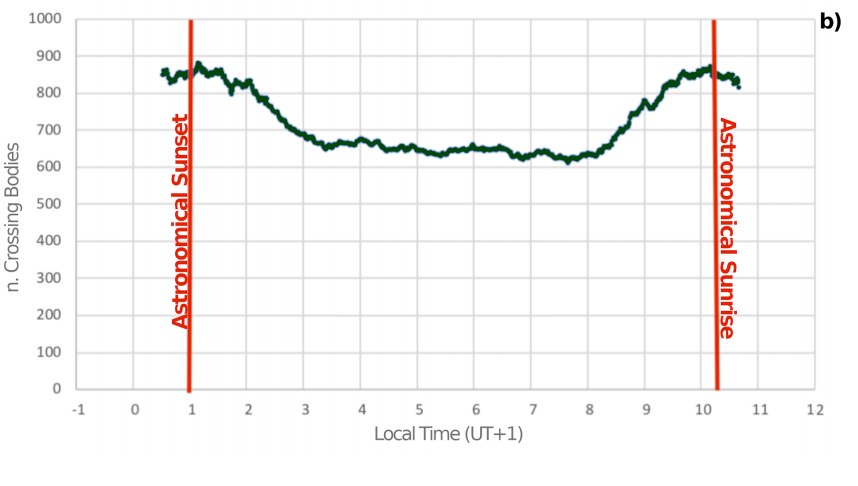
Then there’s the International Court of Justice (ICJ). The three authors say the international community could sue the US government at the ICJ “… to put on hold further Starlink launches to quantify the loss of public finances in damaging national and international astronomical projects.”
The international astronomy community started a petition in January 2020. The community wants a hold put on Starlink and others, they want legal protections put in place for astronomical observing, and they want to limit the number of satellite constellations to a minimum.
“All of these requests come from the heartfelt concern of scientists arising from threatens to be barred from accessing the full knowledge of the Cosmos and the loss of an intangible asset of immeasurable value for humanity,” the authors say.
Space is becoming more of a legal morass as time goes on. Exactly which types of activities will be allowed is unclear. Decades ago, near the beginning of the space age, laws and agreements were put in place to keep things under control.
But nobody foresaw anything like satellite constellations, and the legal framework governing space is likely going to come under a lot of pressure.
- Research Paper: Concerns about ground based astronomical observations: A step to Safeguard the Astronomical Sky
- Wikipedia: Starlink
- American Astronomical Society: Position Statement on Satellite Constellations





